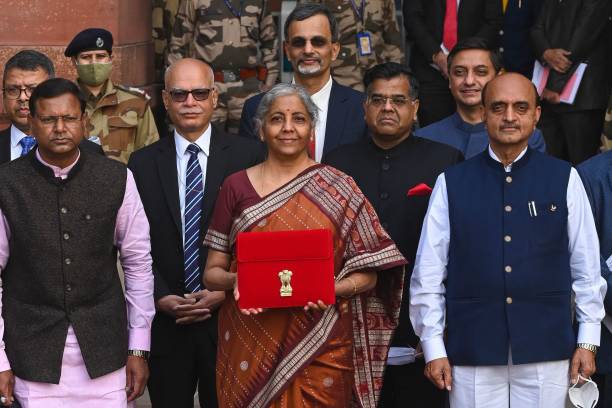Indian economy forecast to keep growing at more than 6% despite global downturn
GDP of the country is pegged to grow at 6.5 per cent

Your support helps us to tell the story
From reproductive rights to climate change to Big Tech, The Independent is on the ground when the story is developing. Whether it's investigating the financials of Elon Musk's pro-Trump PAC or producing our latest documentary, 'The A Word', which shines a light on the American women fighting for reproductive rights, we know how important it is to parse out the facts from the messaging.
At such a critical moment in US history, we need reporters on the ground. Your donation allows us to keep sending journalists to speak to both sides of the story.
The Independent is trusted by Americans across the entire political spectrum. And unlike many other quality news outlets, we choose not to lock Americans out of our reporting and analysis with paywalls. We believe quality journalism should be available to everyone, paid for by those who can afford it.
Your support makes all the difference.India’s growth story is set to see a slowdown as the country’s annual pre-budget survey pegged gross domestic product (GDP) consumption 6.5 per cent higher than the current fiscal year.
According to the economic survey, tabled in the parliament ahead of the union budget, it is the slowest at which the Indian economy has grown in the past three years, even as the forecast is higher than the International Monetary Fund’s (IMF) projection of 6.1 per cent.
The country saw a GDP growth of seven per cent in the current fiscal year, and 8.7 per cent for the year 2021 to 2022.
"The actual outcome for real GDP growth will probably lie in the range of six per cent to 6.8 per cent, depending on the trajectory of economic and political developments globally," the survey said.
Mainly a review of India’s economic performance in the previous fiscal year running from 1 April 2022 to 31 March 2023, it is also the basis for the government’s fiscal projection for the upcoming budget session.
Released a day before Narendra Modi’s government presents the last full budget for the second term in power, the survey said: “Economy has nearly recouped what was lost, renewed what had paused, and re-energised what had slowed during the pandemic and since the conflict in Europe”.
The budget session, beginning Wednesday, will have 27 seating over 66 days, and be extended till 6 April.
Federal finance minister Nirmala Sitharaman is expected to focus on the mounting fiscal pressures instead of resorting to populist measures as the country battles 16-month high unemployment, further slowing down growth rate.
“If you want to create more jobs there is a need to sustain the recovery process that we have seen in the last two years,” NR Bhanumurthy, vice chancellor of Bengaluru-based Dr BR Ambedkar School of Economics University, told Bloomberg TV last week. The government should present a credible fiscal consolidation roadmap to attract investors and focus on outcomes, he said.
The inflationary pressure triggered by the Russia-Ukraine conflict war prompted India to revert the ultra-loose monetary policy adopted during the pandemic, as it indicated that the borrowing costs are likely to remain “higher for longer”.
While the inflation projection for the current fiscal year is at 6.8 per cent, the survey said it was not high enough to deter private consumption nor low enough to weaken investment, even though it remained above the central bank’s target range of two per cent to six per cent.
India’s current account deficit (CAD) was 4.4 per cent in the July-September quarter, higher than the 2.2 per cent of the previous quarter and 1.3 per cent a year earlier. Rising commodity prices are said to have caused it to widen.
The survey also warned against the currency depreciation of the Indian rupee, saying it is likely to persist if the US Federal Reserve hikes the interest rates further. The CAD will widen further if the rupee comes under further depreciation pressure, or if the global commodity prices remain elevated and have higher economic growth momentum.
India’s GDP will grow at a baseline value of 11 per cent in nominal terms, pegged the survey, adding that the growth will remain strong compared to global economies. This, it credited to sustained private consumption, increased lending by banks, and improvement in capital spending by corporations.
According to the IMF, with Chinese growth projected at 5.9 per cent, the two Asian nations will together account for half of the global growth this year. The US and Euro area will account for just a tenth, reported the Financial Times, with the IMF report suggesting that the American economy is expected to be one per cent larger than the previous year.
Additional reporting by wires
Join our commenting forum
Join thought-provoking conversations, follow other Independent readers and see their replies
Comments